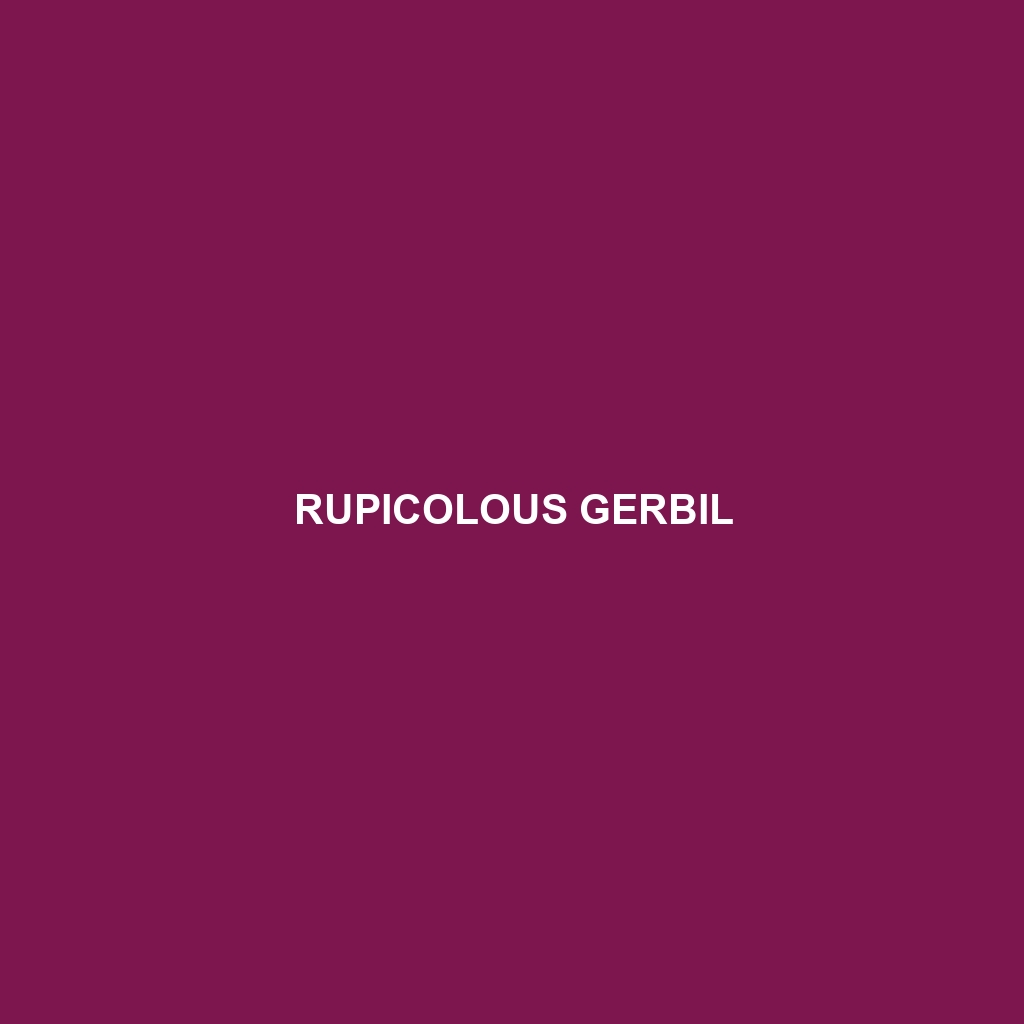Rupicolous Gerbil Species Description
Common Name: Rupicolous Gerbil
Scientific Name: Gerbillus rupicola
Habitat
The Rupicolous Gerbil is primarily found in rocky arid regions and sandy plains across North Africa, particularly in countries like Algeria and Tunisia. This species thrives in rocky outcrops and mountainous areas, where its burrowing habits allow it to create extensive networks beneath the surface, providing refuge from predators and extreme weather conditions.
Physical Characteristics
Rupicolous Gerbils are small rodents, measuring approximately 12 to 15 centimeters in body length, with a tail that can be equal to or slightly longer than the body itself. Their fur is typically sandy-yellow to light brown, which offers excellent camouflage against their natural habitat. Notable features include large eyes adapted for nocturnal activity and long hind legs that enable them to make impressive jumps when escaping danger.
Behavior
This species is primarily nocturnal, engaging in social behaviors such as grooming and playing during the cooler night hours. Rupicolous Gerbils are known for their agility and ability to navigate rocky terrains, often creating intricate burrow systems to store food and raise young. They are also inquisitive creatures, frequently seen exploring their surroundings for food and new burrowing opportunities.
Diet
The diet of the Rupicolous Gerbil primarily consists of seeds, roots, and occasional insects. These rodents exhibit granivorous feeding habits, often storing excess food in their burrows to sustain them during periods of scarcity. Their foraging behavior plays a crucial role in seed dispersion, positively impacting their ecosystem.
Reproduction
Rupicolous Gerbils typically breed during the wet seasons, which can vary by region but often occurs once or twice a year. Female gerbils can give birth to litters of 2 to 6 offspring after a gestation period of approximately 24 days. Young gerbils are weaned at about three weeks and begin to explore their surroundings shortly thereafter, exhibiting independent behaviors while still under the care of their mother.
Conservation Status
Currently, the Rupicolous Gerbil is classified as Least Concern by the IUCN Red List, but habitat loss due to agriculture and urban development poses potential threats to its populations. Continued monitoring is essential to ensure the stability of its habitats and populations in the future.
Interesting Facts
Rupicolous Gerbils are excellent diggers with the ability to excavate complex tunnel systems that can be several meters deep. Their unique burrowing behavior not only provides shelter but also affects the soil composition and aeration, playing a significant role in their rocky habitats.
Role in Ecosystem
As seed dispersers, Rupicolous Gerbils play an important role in their ecosystem, helping to maintain the balance of vegetation in their arid habitats. Their burrowing activities enhance soil structure, supporting other flora and fauna by creating niches for various small animals and plants.
This description provides a comprehensive overview of the Rupicolous Gerbil, integrating essential information in an SEO-friendly manner while maintaining clarity and engaging a broad audience.
